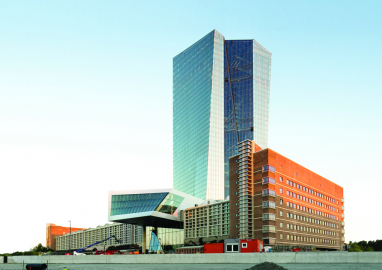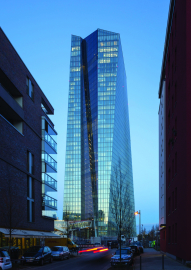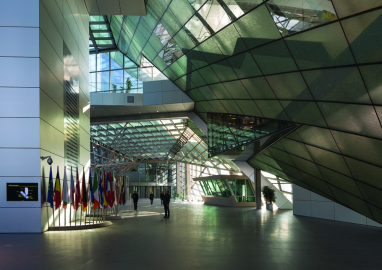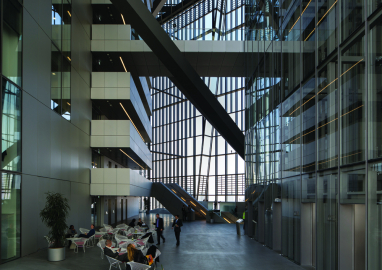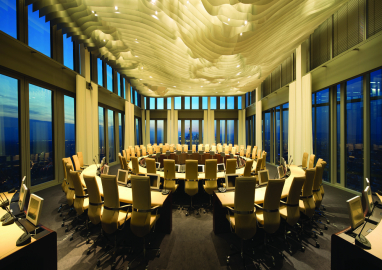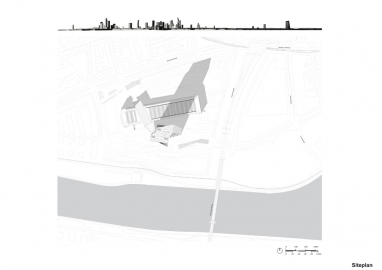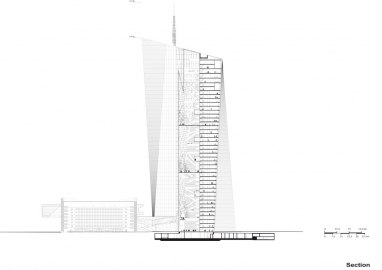European Central Bank
The design combines the horizontal structure of the landmarked Grossmarkthalle – a former wholesale market from the 1920s - with a twisted double tower, which rises to 185 meters. A floating entrance building unites these two elements and marks the representative access to the ECB with its asymmetrical contours, slanted facades and generous windows.
The combination of the horizontal structure of the former Grossmarkthalle and the verticality of the double towers expresses the functional program of the ECB. The former wholesale market houses semi-public and communicative functions, the office areas are located inside the twisted double tower. The appropriate treatment of the Grossmarkthalle in a challenging relationship between old and new was an explicit request from the ECB.
The ECB’s architecture is carefully attuned to its location in Frankfurt’s Ostend district fitting into the town planning, traffic and open space context. With its clear orientation towards the urban perspectives, the ensemble enters a dialogue with Frankfurt’s most important reference points: the Alte Oper, the Museum Embankment and the skyline of the financial district, creating a strong point of reference for a second center on the east side of Frankfurt.
The design concept is to vertically divide a monolithic block through a hyperboloid cut, wedge it apart, twist it and fill the newly created intermediary space with a glass atrium. The connecting and transitioning platforms divide the atrium horizontally into three sections with heights from 45 to 60 meters - just like public squares they invite visitors to communicate. The planned “hanging gardens” ensure an enjoyable room climate.
The former Grossmarkthalle is used as an “urban foyer” - semi-public and communicative functions are located. The conference and visitor’s center, library and employee cafeteria are placed diagonally in the spacious interior of the hall as independent building structures (a “house in house” concept). A floating entrance building penetrates the hall structure from the outside. The so-called “loop”, a glass walkway between the high-rise and the market hall, completes the ensemble.
The planning challenge was to meet all the ECB’s high security requirements, and yet show an open character. The result is a very complex geometry and a multifaceted building offering a completely different appearance from each angle.
The overall structural framework consists of reinforced concrete in the towers and a vertical steel frame in the atrium between them. Aside from the twisting of the high-rise and the torsion of its facades, the appearance of this steel frame is a defining element of the tower’s structure.
The structural framework of the atrium consists of angled steel trusses that stabilize the towers and accentuate the open spaces of the atrium.
The entrance building and the “house in house” building elements in the Grossmarkthalle are steel-framed structures.
The energy concept optimizes the performance by 30% below the German Energy Saving Directive and includes the following measures: utilization of rain water, heat recovery, efficient insulation, sun protection and illumination as well as a natural ventilation for the offices. Some areas are not equipped with an air conditioning system; instead they serve as a buffer zone between the interior and exterior climates. The "shield hybrid facade" of the office towers consists of three layers and offers a direct and natural ventilation of the offices via vertical, room-high ventilation elements.

